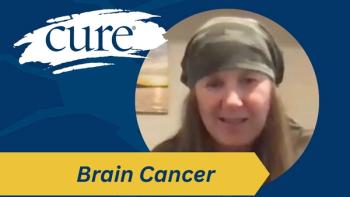
Goal-Focused Therapy May Improve Distress in Testicular Cancer Survivors
Key Takeaways
- GET aims to improve distress symptoms, emotion regulation, and goal navigation skills in testicular cancer survivors.
- Testicular cancer survivors face unique psychosocial challenges, emphasizing the need for targeted interventions like GET.
An intervention strategy focused on goal pursuit and skill building may be the ticket to helping reduce high emotional distress levels experienced by young adult survivors of testicular cancer.
Goal-focused emotion-regulation therapy (GET), an intervention strategy with the objective of improving distress symptoms, emotion regulation and goal navigation skills showed potential as in mitigating stress testicular cancer survivors, new research showed.
While testicular cancer is one of the most prevalent cancers for men in late adolescence and early adulthood, it also has high survival rates. This emphasizes the importance of research to help improve survivorship and long-term quality of life for these individuals – many of whom experience body image issues, social relationship difficulties, fertility and sexual distress and other worries.
“The development of what we call goal-focused emotion regulation therapy really came out of out of a series of more basic studies really beginning with just interviews of young adults who've had testicular cancer,” said study author Michael A. Hoyt in an interview with CURE®.
“And in that early work we really just talked to them about how they thought about quality of life, how they thought about what impacted them, how they described not just how cancer came to their life, but what was the impact after they finished treatment, for instance. And I heard so many stories that really revolved around a few key themes. And one of those themes was goal pursuit.”
Hoyt, who is a clinical health psychologist and associate professor in the department of population health and disease prevention at the University of California, Irvine, explained that young adult testicular cancer survivors face an extra layer of psychosocial challenges due to their young age, such as educational pursuits, search for independence, relationship and family building – “Sort of all those hallmarks of that time in life,” he said.
Therefore, the GET intervention is focused on skill building and goals as well as emotional fallout.
“I think in our society, particularly with guys, we get the message of ‘never give up.’ And so really thinking about the sort of life skills that underscore that was a big part of it,” Hoyt said.
They also aimed to teach skills for regulating emotions that may feel out of a patient’s control, such as understanding them, identifying them and expressing them in healthy ways.
The research, which was published in the American Journal of Men’s Health, examined the effects of six sessions of GET, when compared with another type of therapy – individual supportive therapy (ISP), on salivary stress and circulating inflammatory and angiogenic markers in young adult (ages 18-39) survivors of testicular cancer who were treated with chemotherapy within two years prior to the study.
“We decided to use ISP as a control group because it probably is the most common type of therapy folks get when they search out support,” Hoyt said. “And so at its basicness, the supportive therapy approach is supportive listening… And it can be great for a lot of people – I don't mean to suggest that's not a great thing, it really is. In this case, I felt like, I don't think that's a good match. That's not what I heard from these guys. They're telling me they don't know how to talk about this, they don't know how to navigate emotion. If they're sitting in front of someone who says, ‘Hey, start talking, you lead us,’ they may get a little lost in it, that was my instinct… And so supportive therapy is really kind of a more traditional model of listening and offering support.”
There were 44 patients in the study with an average age of 28. Most were single or unmarried and had earned a college degree, and 43% identified as an ethnic or racial minority. Along with having received chemotherapy as part of their treatment, all of the patients had also received surgical intervention including orchiectomy – the surgical procedure to remove one or both testicles – (100%) and retroperitoneal lymph node dissection surgery (around 60%).
The patients who participated in GET had significantly lower daily cortisol output after completing the intervention than those receiving ISP. There were also patterns of decreasing salivary cortisol and alpha-amylase (sAA) and multiple plasma markers observed in the patients receiving GET.
“We focused in on sort of two big, broad categories of biological markers, one being stress hormones that we could measure through saliva, and biomarkers of the immune system that we might label as inflammation or related to inflammation,” Hoyt said. “And both stress hormones and inflammation cells, they sort of work together. And we know that when someone has too much of both of those things, or one of the other of those things, that seems to be kind of similar to what we see when someone reports high depression, or our research across studies seems to show those markers are related to things like persistent fatigue, poor sleep regulation and more negative mood states and cognitive dysfunction.”
The results show promise for GET as an option to help mitigate cancer-related stress in young adult survivors, especially for those with higher levels of distress. A large-scale trial is necessary to further investigate this strategy, according to the authors.
“We want to not just see if we change biological markers, but we're now looking at our data to see about the psychological changes. It's great if you lower someone's stress hormones, but it's even better if they say, ‘I feel better, I perceive myself to be in a better place.’ So that's what we're looking at now,” Hoyt added.
For more news on cancer updates, research and education, don’t forget to




